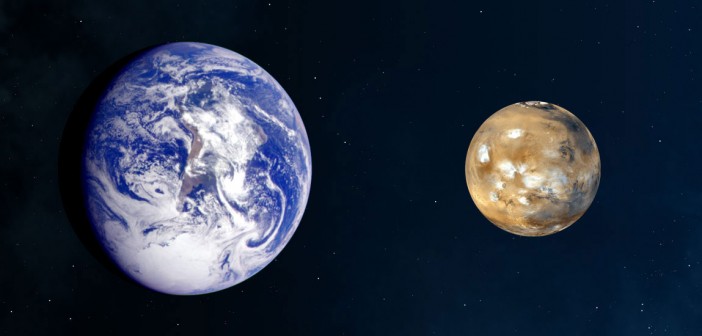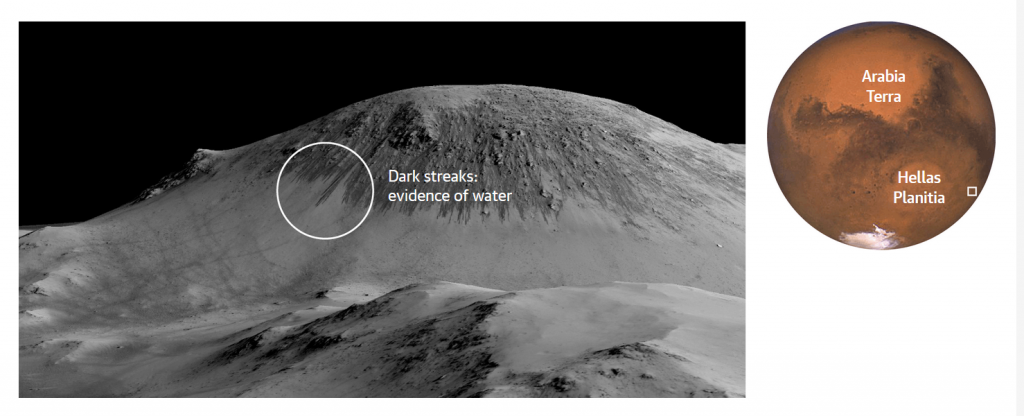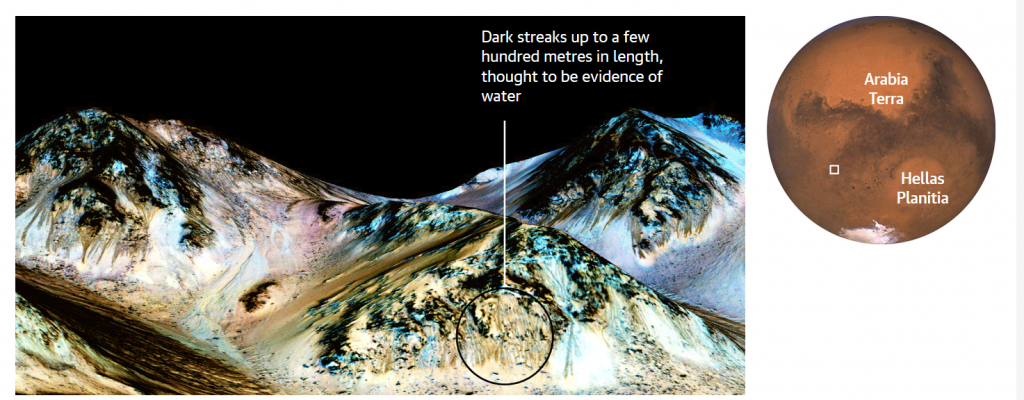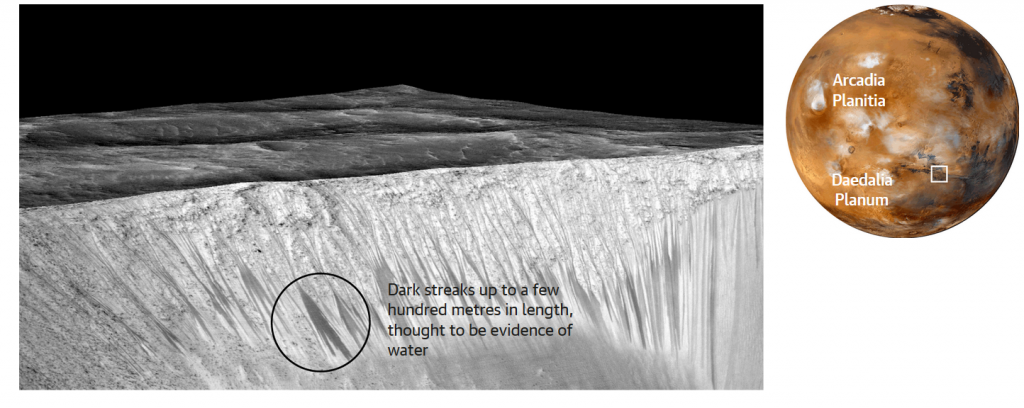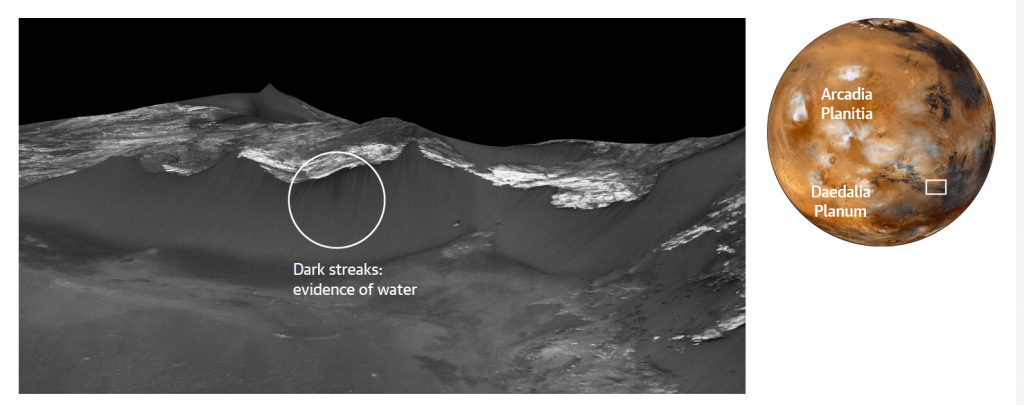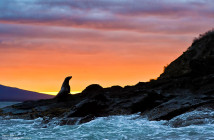From the day that Galileo Galilei made the first telescope observation of Mars in 1609, humanity has been fascinated by finding out more about our red planetary neighbour. Aside from being the closest planet to Earth, it is also the most earthlike in terms of temperature (a summer day on Mars is a human friendly 20Co) and atmospheric composition (majority CO2 with trace of oxygen and other gases). As a result, many have theorised about the possibilities of finding life on Mars, with renowned 19th century French astronomer Percival Lowell sensationally announcing he could see a network of artificial canals on Mars – a statement that did plenty to ignite imagination (this later proved to be an optical illusion).
As technology advanced and our interest in finding if we are alone in the universe grew, we were able to send multiple probes to Mars to search for signs of life (43 to date and counting). So far all observations returned data that proved that although Mars may have billions of years ago harboured water, and even life, it is today a dead dry rocky planet where the only water is dry ice stored in the polar icecaps. Yesterday this changed.
What was discovered?
Although all samples returned from Mars have never found flowing water, there were photos taken by Mars probes beginning in the 1970s that showed dried up river beds, implying water once run through them. About ten years ago, NASA’s Mars Reconnaissance Orbiter captured an image that showed water might still exist on mars in liquid form. In a paper published in 2011 researchers noted that dark streaks on steep Martian slopes occurred during the summer months and grew larger as temperature increased above -23Co. Although this was not yet proof of actual running water and as such, the streaks were named Recurring Slope Lineae – RSL for short – and earmarked for further study.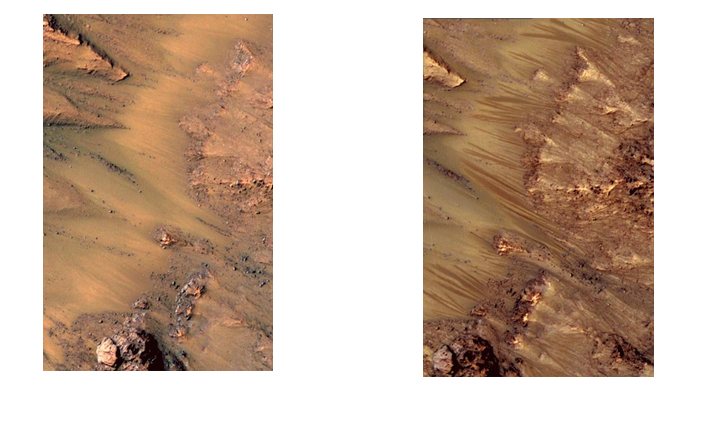 Figure 1: RSL growing larger as temperatures increase
Figure 1: RSL growing larger as temperatures increase
To analyse further, researchers used a spectrometer (a sensor that measures light spectrum emitted by objects on a plant’s surface to determine their chemical composition) aboard the Mars Reconnaissance Orbiter to analyse the RSLs and understand their chemical composition. They analysed infrared light reflecting off the steep Martian slopes when the RSLs appear and when they grew to full size. The spectral signatures they received were those of hydrated salts (mix of chlorates and perchlorates) when the flows were present. These signatures were not present when the RSLs disappeared following colder weather.
The hydrated salts are a direct link to the presence of flowing water on Mars (see figure 2). What’s more, they were found on all four sites that were tested: the Coprates Chasma canyon and Palikir, Hale, and Horowitz craters (figures 3-6; images via Guardian).
Figure 2: NASA diagram showing workings of how perchlorates can turn moisture from the atmosphere into water.
Figure 4: The Hale crater
Figure 5: The Garni crater
Figure 6: Coprates Chasma canyon
So what?
The fact that flowing water was found on Mars – and more importantly that it was briny—makes it more likely that it could support life as fresh water would freeze on Mars. We are therefore now one step closer to proving we are not alone in the universe.
Additionally the water can be used for astronauts to water crops, and even produce hydrogen based fuel for return flights to Earth.
As such, it is likely that a lot of effort will now be spent trying to understand which regions of Mars have the largest amounts of RSLs in order to find a landing spot for future Mars colonies positioned closest to abundant water flows. Incidentally this also raises the question of whether we should be disturbing the ecology of the planet by bringing earth microbes onto Martian soils upon landing, and I expect this to be a great stage of deliberation among Space Agencies participating in this endeavour.
In any case the findings bring us closer to answering our fundamental questions about our place in the universe and further our ability to understand and make sense of the world around us. Not only this, but the finding provides an extra reason to leave the confines of our planet and do the one task humans were born to do above other – explore.
What a great time to be a human. What a great time to be alive.


